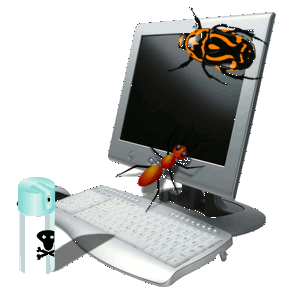Malware
Sorry, but it is true, computers are not always 100% honest.

- steal personal information stored or typed on a computer (Trojans, spyware)
- steal or borrow system resources
- gain unauthorized access to resources on other machines
- disrupt or otherwise modify normal computer operation of its host machine or other devices on a network
- scare or threaten future or more serious attacks (scareware)
- automatically plays, displays, or downloads advertisements to a computer (adware)
- annoy the owner of the infected device to no end and many other undesirable or malicious things
| Type of target | Examples | Notes |
|---|---|---|
| Operating Systems | Windows, Linux | Any operating system can be the target of at least one type of malware |
| Social Platforms | Malware best spread through social engineering | |
| Mobile Platforms | Android, Apple | |
| Packages | Adobe | Targeted due to popularity and ubiquity |
| Utility control systems | US Power grid | In 2010 a Trojan was created to attack a utility control system running Siemens' Simatic WinCC or PCS 7 software. |
| Blogging Platforms | Wordpress | |
| Investment firms | Mostly in China, but one large well-known firm in New York |
Protection and prevention: How TheraP.C. can help?
So as to not give everyone tired-head, we attempted to boil this stuff down to a few simple facts. This is not intended to be a training guide for technical professionals. Even though, if you do not want to attempt to navigate the malware universe of Trojans, worms, scareware, adware, spyware, crimeware or rootkits, let us be your guide. The best defense against infection is education.
Beyond education, here is what we can do to help:
For individual computer owners, home networks, home offices and commercial networks, we can:
- Detect, remove and repair infected machines, remotely or on site
- Perform routine maintenance and network audits to ensure networks assets are free from new threats
- Provide network users with educational resources to prevent unauthorized system access resulting from social engineering, such as phishing.
- Provide monthly scorecard on company's threat levels for management
- Be your peace-of-mind providers when it comes to healthy computer resources
